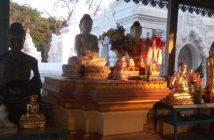The ancient temple complex of Angkor Wat is very much the symbol of Cambodia; so much so, that the famous three towers appear on the national flag. Nonetheless, we actually considered skipping it on our tour of Cambodia. Why? Because it’s so well-known, so familiar, that the site itself could hold few surprises. In the end we did go, but we also took a trip to a less celebrated complex to the north-west, and that proved a more memorable experience.
Angkor Wat lies just outside Siem Reap, a lively and cosmopolitan city that’s well worth seeing in its own right. If you’ve planning on visiting the temples I’d recommend spending half a day at the Angkor National Museum first. The carvings and statues are more interesting when you know a little about the stories, beliefs, and histories that underpin them.
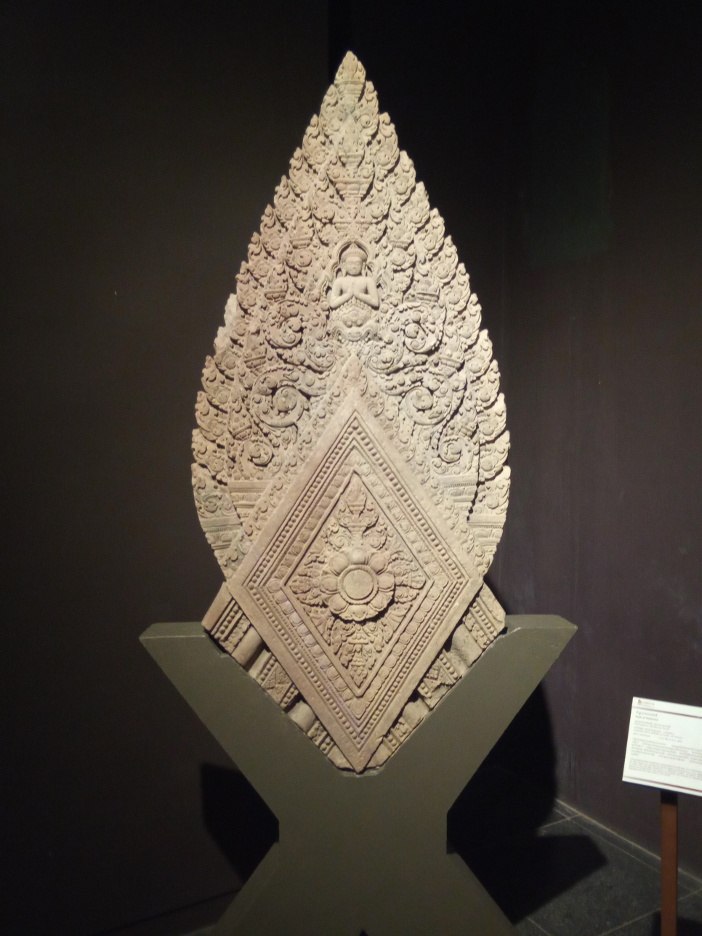
The Angkor National Museum preserves some wonderful relics and also tells their stories
A visit to the temples themselves follows a well-worn path. You’ll need to be up before dawn, and unless you’re very fit and determined you’ll need a tuktuk to take you around. (Most hotels will arrange this for you, for a standard fee.) The driver will take you first to the visitor center to buy tickets. Make sure you take a picture of him and his vehicle before you go inside, or you’ll emerge bleary-eyed to a gloomy car park containing hundreds of very similar tuktuks!
You’re then taken to Angkor Wat itself, to see the sunrise. Walking there in a huge procession in darkness, crossing rivers on ancient stone bridges and modern floating walkways, is an eerie experience. As dawn approaches though the crowds get denser, and the jostling for the perfect place to take that photograph which will impress all your friends on Instagram begins. I became more interested in watching and photographing the tourists, amid a forest of tripods and selfie sticks. I wondered what future generations will make of this obsession with capturing every moment rather than simply being there, and who will ever look at all the millions of pictures taken.
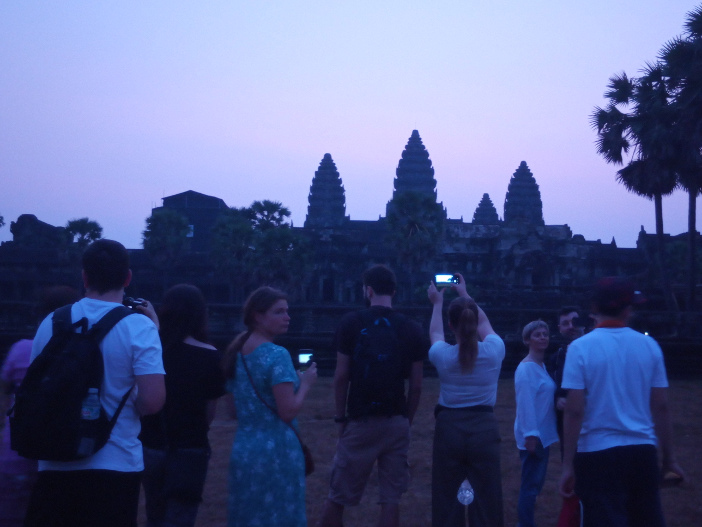
Dawn at Angkor Wat has become a competitive photography experience
The temple itself, and the even larger ruined city of Angkor Thom, are stunning, and large enough that you can find moments of tranquility away from the throngs. We didn’t regret going there, but by early afternoon even I was, to my sons’ relief, all templed out.

The beauty of the ancient carvings is at times breathtaking
However on the way to Siem Reap we’d stopped off at a town called Sisophon. It’s an unprepossessing place, but a handy base for exploring Banteay Chhmar: the Small City.

The ruins at Banteay Chhmar are quieter and more magical
Banteay Chhmar gives some idea of what Angkor Wat must have been like a century ago. The extent to which the ruins were forgotten or neglected by locals, and the role of westerners in rediscovering them, is an issue of fierce controversy. But Banteay Chhmar is in places still piles of blocks, and is slowly being reconstructed.
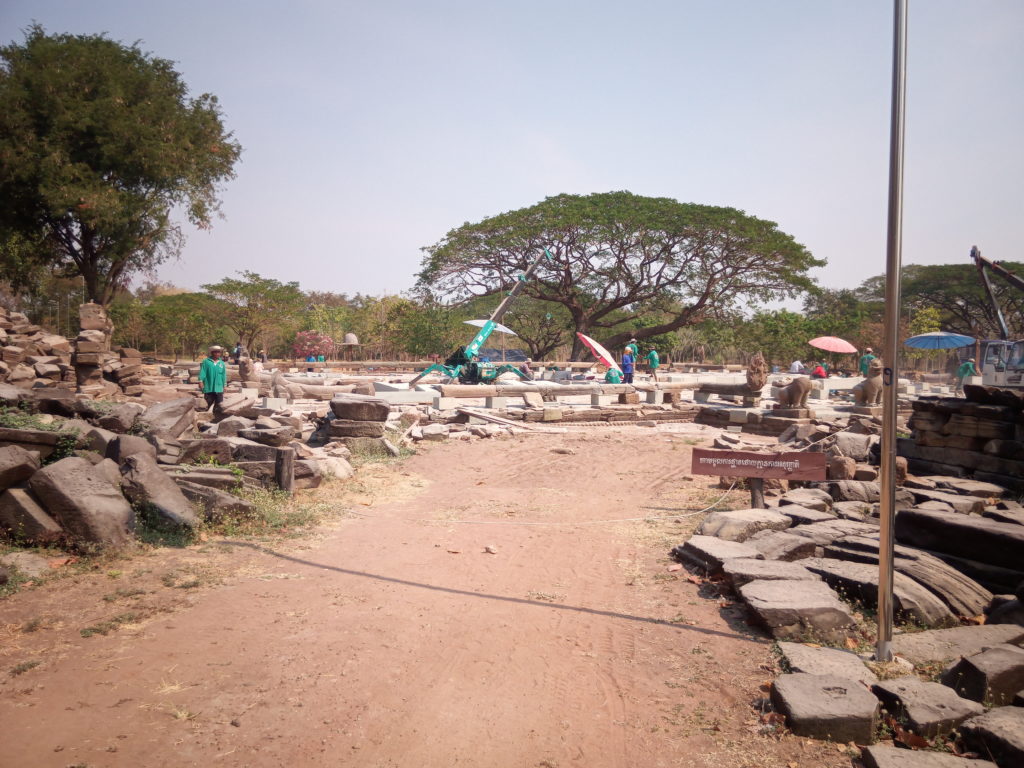
The complex at Banteay Chhmar is currently being reconstructed
 The marvelous carvings have been put back together, with the different colors of the bricks revealing how they have been differently exposed to sunlight over centuries
The marvelous carvings have been put back together, with the different colors of the bricks revealing how they have been differently exposed to sunlight over centuries
As a result it’s quieter, less crowded, and a great place for kids to run around and indulge their imagination and sense of adventure. The only annoyance we encountered was one of the builders who decided he was going to show us around, in spite of the fact that he didn’t speak a word of English and as a result his tour consisted of him pointing at things we could already see. He doggedly ignored our attempts to shake him, until even my wife and I ran and hid to get away.

The tunnels of Banteay Chhmar make a great place for hide-and-seek
It’s possible to get to Banteay Chhmar from Siem Reap, but the 90 minute drive from Sisophon was more than enough for our children. It also provided a break on the road from Battambang to Siem Reap. However with hindsight we would have stayed there only one night, and headed straight for Siem Reap after seeing the temples; there’s not much to do in Sisophon itself. Even so, I’d recommend Banteay Chhmar to anyone visiting Cambodia with kids.
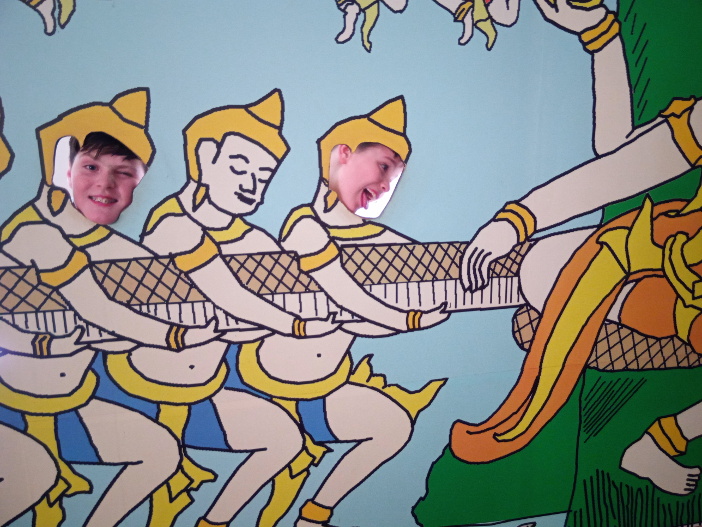
Photos: Andrew Killeen



